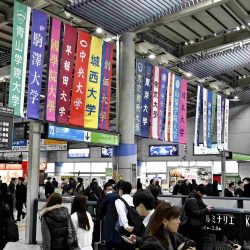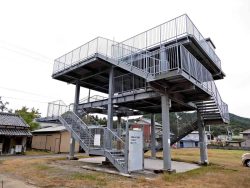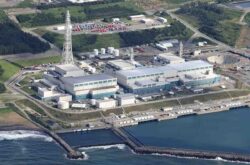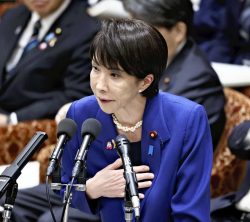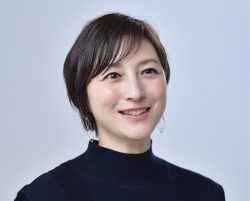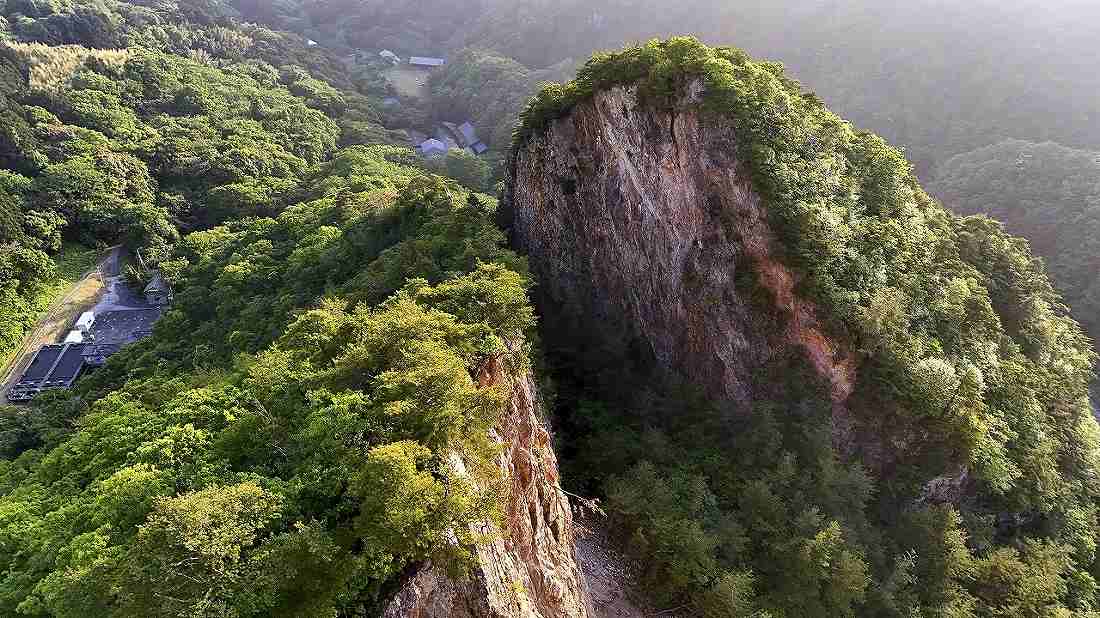
Doyu no Warito, the symbol of the Sado gold mine complex (Photos were taken between May 17 and June 4)
13:48 JST, July 21, 2024
A split mountain can be found in the Aikawa district in the central-western part of Sado Island, Niigata Prefecture. The split, which begins near the summit and nearly cuts the mountain in two, is man-made, as the mountain was part of a huge gold mine dug by hand in the Edo period.
The chasm, 30 meters wide and 74 meters deep, is called Doyu no Warito. It is the largest surface mining ruin in Japan and is a symbol of the Sado gold mine complex, for which there are hopes of World Cultural Heritage site designation this summer.

Tunnels developed for sightseeing in the Sado gold mine complex
Approaching the summit with a drone, I was overwhelmed by the size of the cross-section. I wondered how people mined through this huge mountain by hand.
The Sado gold mine complex is composed of just two areas, which were managed by the Tokugawa shogunate during the Edo period. However, historic sites and ruins exist in every nook and cranny throughout the island, showing the history of mining over the span of roughly 400 years until 1989.
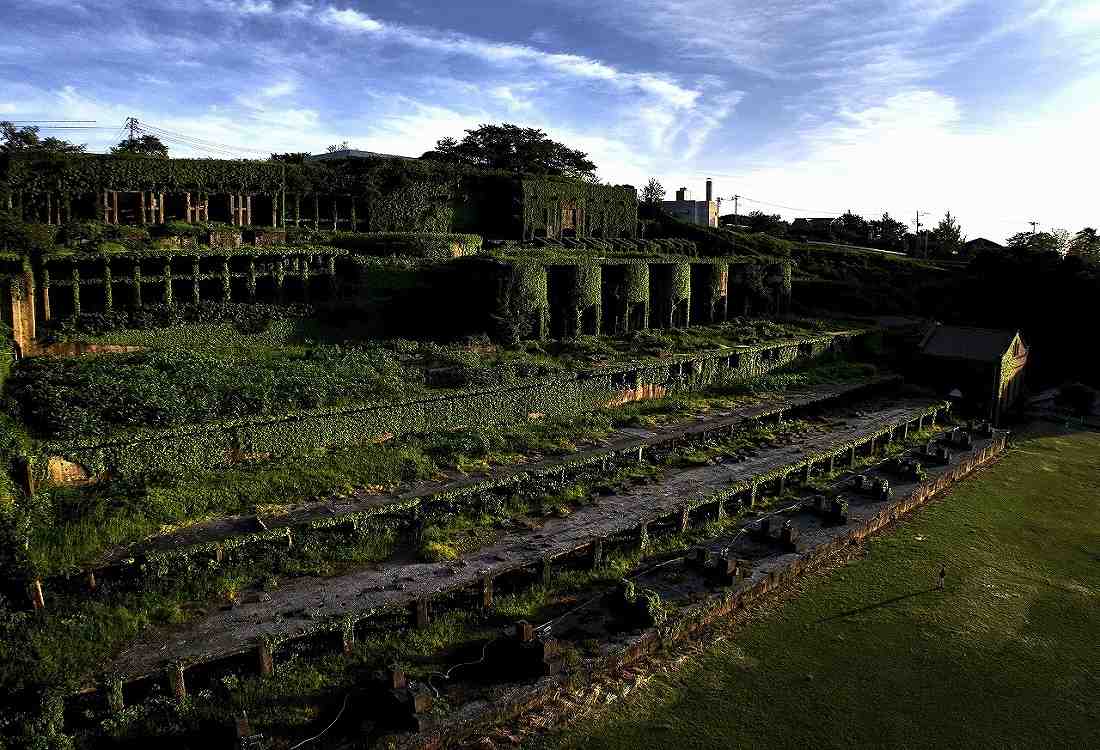
Kitazawa Flotation Plant once supported gold production in early Showa era.
Kitazawa Flotation Plant, which supported the peak of gold production in the early Showa era, is a case in point. The plant earned the epithet “the top flotation plant in the Orient” for its role in sorting out gold-rich ores coming from the mines. Despite the plant ceasing operations in 1952, it has become a popular tourist attraction because the foundations of its buildings, covered with plants, look like a castle straight out of an anime.
Honkyo Saito, chairperson of Aikawa Fureai Guide, 72, said: “After [the plant] closed, you couldn’t see it because it was covered by a thicket of trees. In the square in front of the ruin there used to be a golf practice area.”
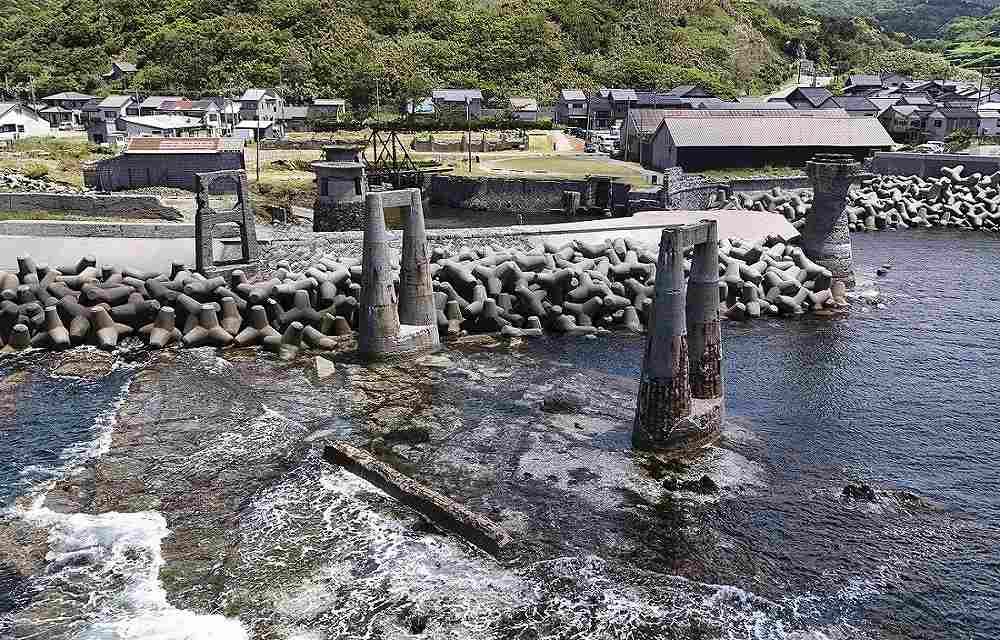
Materials such as metal ores and coal were brought in and out of the port of Oma.
Recognized as an important heritage site for the history of mining, the site was developed about 15 years ago. Remnants of the once-thriving mining town nearby can still be seen.
While an advisory panel to UNESCO did not recommend designating the gold mine as a World Heritage site, the World Heritage Committee, which is to kick off on Sunday in India, may decide to recommend designation. On the island, the development of lodging facilities and the training of staff capable of foreign language assistance are underway.
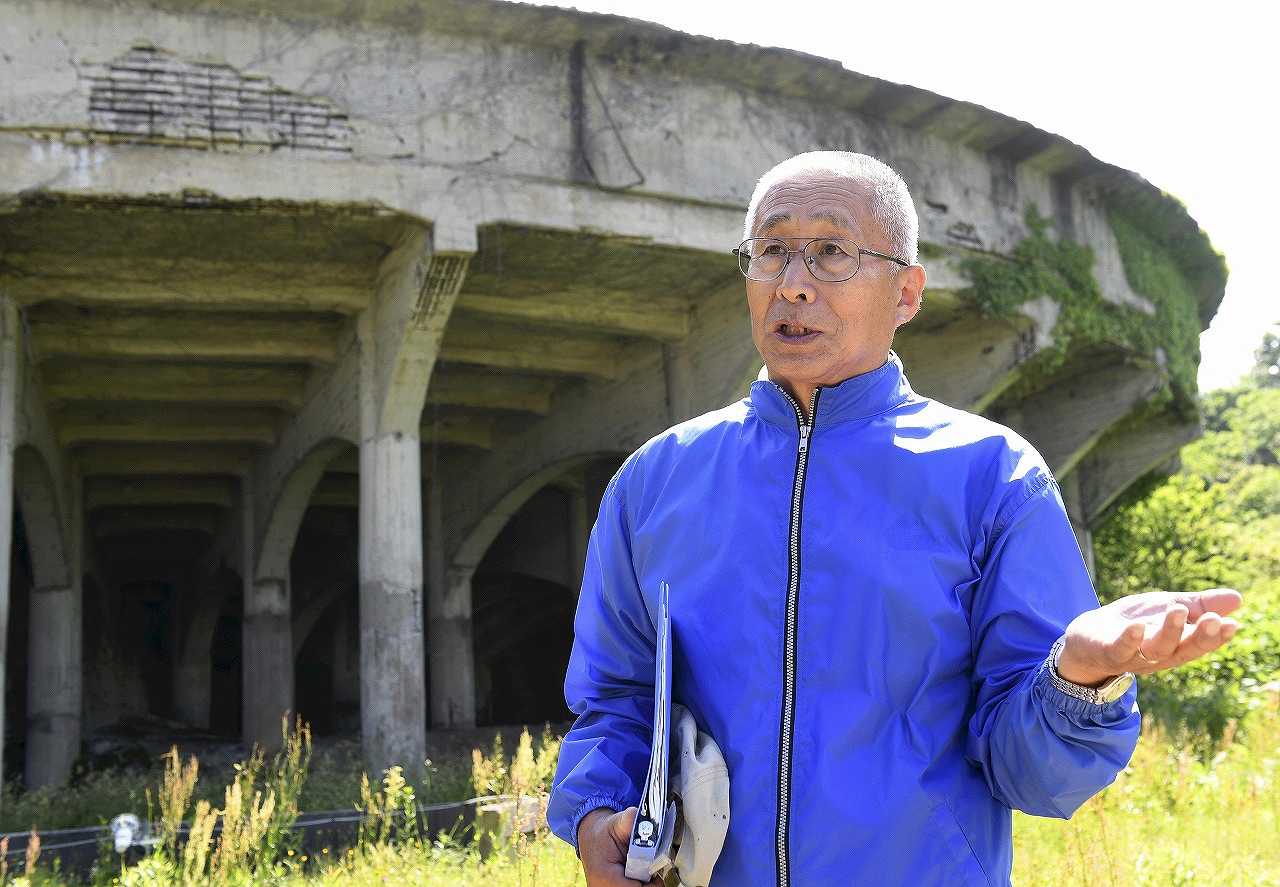
Honkyo Saito speaks in front of a circular sedimentation tank where mud-covered minerals and water were separated
Saito said: “Sado was once called an island of gold. I hope not only Japanese but tourists from all over the world will come.”
Click here to see 3D images and video close to the scene at low altitude"Society" POPULAR ARTICLE
-

M4.9 Earthquake Hits Tokyo, Neighboring Prefectures
-

Israeli Tourists Refused Accommodation at Hotel in Japan’s Nagano Pref., Prompting Protest by Israeli Embassy and Probe by Prefecture
-

M7.5 Earthquake Hits Northern Japan; Tsunami Waves Observed in Hokkaido, Aomori and Iwate Prefectures
-

Tsukiji Market Urges Tourists to Avoid Visiting in Year-End
-
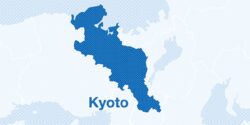
High School in Kyoto Says Students Shoplifted during Recent School Trip to Bali, Indonesia
JN ACCESS RANKING
-

Tokyo Economic Security Forum to Hold Inaugural Meeting Amid Tense Global Environment
-

Keidanren Chairman Yoshinobu Tsutsui Visits Kashiwazaki-Kariwa Nuclear Power Plant; Inspects New Emergency Safety System
-

Imports of Rare Earths from China Facing Delays, May Be Caused by Deterioration of Japan-China Relations
-

University of Tokyo Professor Discusses Japanese Economic Security in Interview Ahead of Forum
-

Japan Pulls out of Vietnam Nuclear Project, Complicating Hanoi’s Power Plans


